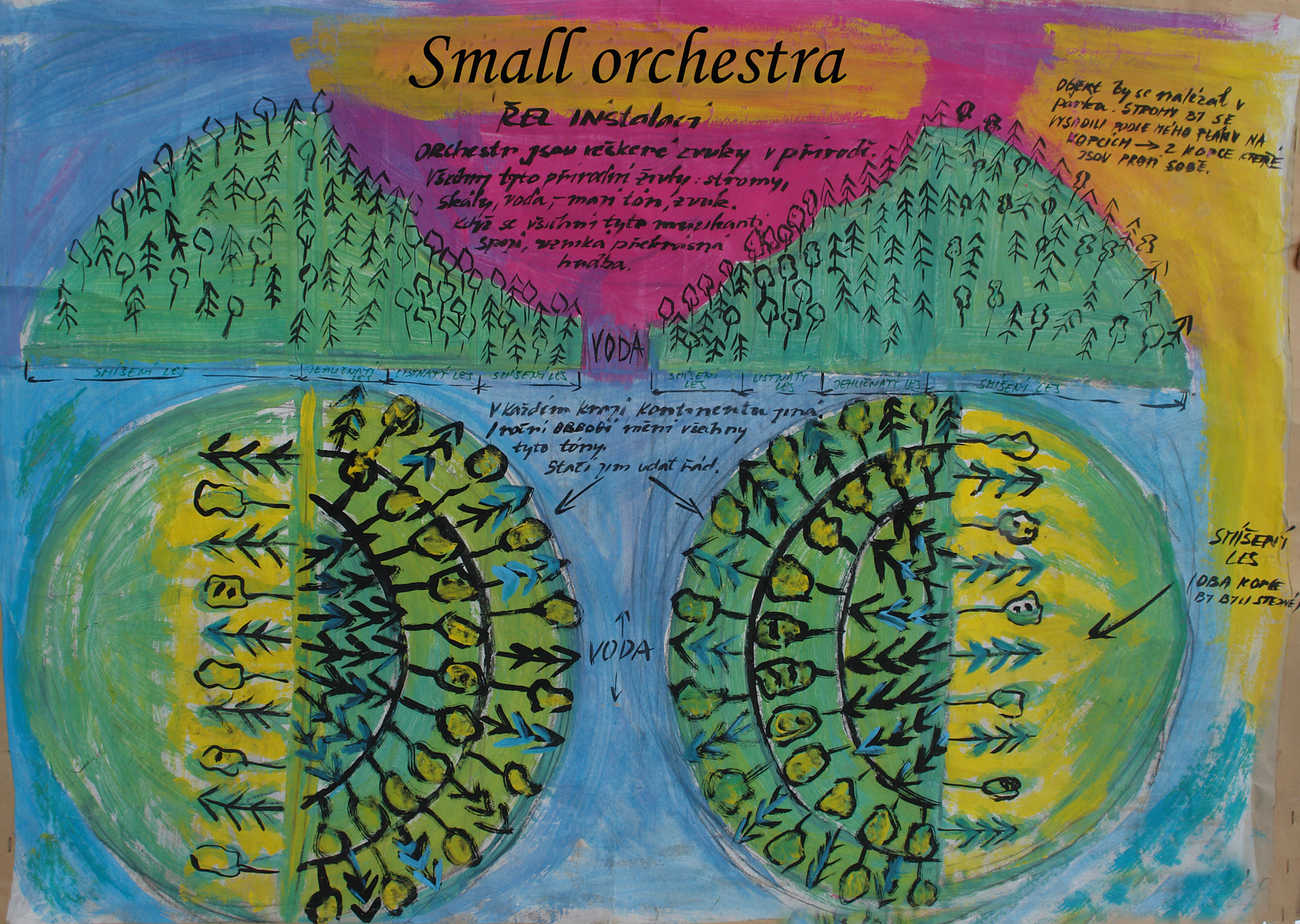Autorka říká: „Počátek stopy jsem objevila v ukrojeném kolečku mrkve, při detailnějším pohledu můžete vidět postupný růst, dobré či špatné podmínky pro její život, tak jako u stromů. Les, celé zástupy stromů, viděli všichni z nás. Chodíme kolem nich, dávají nám možnost dýchat, dávají nám krásu. I přesto, v našem konzumním světě, pro spousty z nás nic neznamenají. Když vstoupíte do lesa, aniž byste měli výborný sluch, slyšíte, jak stromy zní, hrají. Každý si najde svou vlastní interpretaci. Vyrostla jsem v oblasti, kde má rodina vlastní pozemky a byla jsem vychovaná s úctou k přírodě, která nám dává život. Již od roku 2002 sbírám fotografie mrtvých stromů. K přenosu biologického jedince jsem přišla po nastudování dendrochronologie, vědy, která je velice přesná a určuje celá kvanta čísel o reakci jedince na svět. Jeho komunikaci se světem přetransformovávám do zápisu hudebního a obrazu. Z dendrochronologie jsem použila jednoduchý přenos dat z letokruhů v číslech. Měření musí probíhat ze všech světových stran, z každého letokruhu zvlášť, a výsledky získáme porovnáváním hodnot mezi nimi. Vše je měřeno čísly. Tento číselný výpočet je notovým záznamem.“
The artist says, “I found the origin of a trace in a slice of a carrot. If you look closely at it, you can see the progressive growth, the good or bad life-condition; it is similar to what you can see in trees. We walk through forests of trees, little appreciating their status as the lungs of the world. Lots of us admire their beauty, but in spite of this, trees mean nothing to too many people & to the consumer society we inhabit. Even if you lack a musical ear, you are still capable of hearing and interpreting the sounds of the forest as you wander through the woods. Growing up, I spent most of my youth in the countryside, where I developed a great respect for nature and its spectacular scenery. Since 2002 I have been collecting photos of deceased trees. It was this that led me to studying dendrochronology. Dendrochronology is the science of dating trees through the study of their annual growth rings. Based on the thickness of the annual ring increments we can deduce what kind of natural forces influenced the development of the tree. Dendrochronology provides me with naturally generated numbers I use to form both a musical score and a visual record. The numbers are derived from annual ring growth data. Measurements relate to each annual ring separately and are taken for each of the four cardinal directions. These separate ring measurements are then compared and it is the results of this that form the musical score.”



